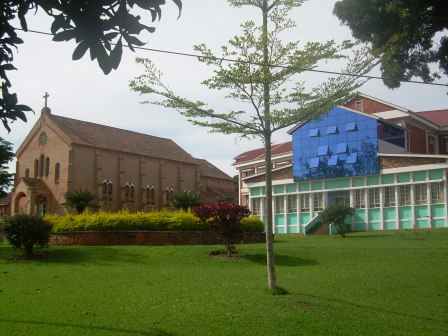Katigondo National Seminary is in its 102nd year of
existence but, according to Rev Father Dr Herman Kituuma, the rector of
the seminary, the centenary celebrations will be held in 2013. It sounds
a little strange that the centenary activities were not held in 2011,
exactly 100 years after the seminary was established at its present
location in what is today Kalungu District (in Masaka Diocese).
But
this becomes easy to understand when it is remembered that the history
of Katigondo Seminary actually forms a very important part of the
history of the Roman Catholic Church. Not only here in Uganda but also
in the entire East African region and Africa. It is the institution that
turned out the first two African Roman Catholic priests in Sub-Saharan
Africa, Father Basil Lumu and Father Victor Mukasa, and it is the
institution that produced the first African bishop, Dr Joseph Kiwanuka.According
to the book, A History of African Priests by John Mary Waliggo, the
seminary was the first institution of higher learning in the region to
provide the same quality of education to Africans as that offered in the
European major seminaries and universities. Many of the teachers at the
seminary were indeed referred to as professors. They taught Philosophy,
Theology, Canon Law, Rhetoric, Mathematics, Politeness, Church History
and a whole range of other disciplines and the languages of instruction
were English and Latin.
Katigondo was established by the White
Fathers as a major seminary to take on young men who had finished their
preliminary priesthood training in minor seminaries that already
existed at places like Rubaga (in Kampala), Kisubi (Entebbe Road) and
Bukalasa (in Masaka Diocese, some 400 meters from Katigondo).
Katigondo
Major Seminary was officially opened on the Feast Day of St Thomas
Aquinas, March 7, 1911, the saint to whom it is devoted. Just after
gaining entrance into the seminary’s compound one’s attention is
immediately drawn to an imposing statue of St Thomas Aquinas right in
front of the chapel.
Some of the
buildings built around that time, like the Fathers’ residence, still
stand to this day according to Rev Father Francis Nnaku, the dean of
studies at Katigondo. He said the building whose walls were constructed
with mud and red bricks was grass thatched in those days but after some
years, it underwent some face lifting and got its present roof of clay
tiles.
If at most Catholic
parishes in the country good farming practices are emphasised, it could
have stemmed from the training the priests underwent at the seminary.
Katigondo has a 500-acre farm on which the priests and seminarians grow
different crops, keep poultry, and rear pigs, goats, and cows.
So the seminary has tractors to
cultivate some 300 acres of land for growing crops like sweet potatoes,
beans, maize, bananas, coffee and a variety of fruits.
Failure
to observe such simple regulations could lead to serious disciplinary
action or even dismissal from the seminary. Since it is a house of
formation the number of seminarians has always been kept small, which
means that the Fathers have more chance to observe them and to focus
more on their training. Even today given the seminary’s enormous
resources, compared to other Ugandan institutions, Katigondo has only
about 240 students.


No comments:
Post a Comment